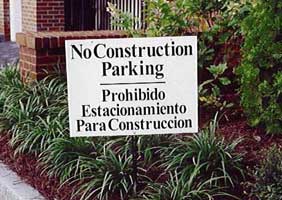What Is Suburbia? One Research Team's Story
written by Gerri HajdukSuburbia today is not the Utopia once imagined and longed for: it is "Mayberry." Suburbia today is dynamic, multifaceted, and difficult to define. A suburb may try presenting itself in a particular way, but the reality is usually very different. Despite their homogenous appearance, suburbs are more diverse than they appear and often face economic tension, political tension, and challenges surrounding immigrant groups that have now become part of the suburban community.
To explore the complex suburbs of today, our team chose site observations as our primary research method. As a group, we viewed a PBS video, Displaced In The New South, which analyzes the current changes taking place in Chamblee, a suburb of Atlanta. The discussion that followed led to a set of initial questions that we would use to guide our investigations of suburbia.
- What do we look at?
- What should we be looking for?
- Who is welcomed and who is excluded from the community?
- How does the community try to represent itself?
- What does this community reveal about the contemporary attitudes in Atlanta?
To broaden our understanding of suburbia, we studied Kenneth T. Jackson's Crabgrass Frontier,The Suburbanization of the United States, chapter five of Edge Cities by Joel Garreau and listened to the Carmen Agra Deedy tape on Growing Up Cuban in Decatur, Georgia. To give us a better sense of what was going on in the communities around metro Atlanta, we collected newspaper articles about suburban lifestyles, immigrant experiences, and the problems of sprawl.
Our next and most difficult step was to decide on a focus. Suburbia includes so many different topics that we decided to concentrate on three diverse communities and look for common threads to make our investigation of suburbia manageable. The areas we chose for site observations are unique to Atlanta, but may well be similar to other metro areas across the country: Smyrna (growing Hispanic immigration/new image to the town center); Tri-Cities (once urban, now suburban) and Post Riverside Communities (planned communities of the future). Before we did our on-site visits as a whole team, one team member researched the particular locations and decided on the specific places that we would explore as a group. Our investigation included historic, social, economic, and architectural aspects of each area. We took pictures of the rapidly changing landscape and gathered oral histories from residents. The information we assembled was so vast, that we realized that we would have to form a more directed for writing about our study. The four components from our initial inquiry that we decided to examine in more detail were community self-presentation through designated landmarks, spatial management, major artifacts that reflected community values, and interviews with residents. To provide one example of this collaborative research, our section of this website presents one team member's description of one community we visited, along with her analysis of a key landmark there-the town square.
Picturing Suburbia: Using Field Visits, Photography, and Writing to Study Community
By Gerri Hajduk
The Town Square Redux
by Linda Stewart
Suburbia: Must we pave Paradise to Put up a Parkinglot? a PowerPoint presentation (PowerPoint viewer required for viewing)
by Heather McDevitt, KSU Honors studentContent Design/Management: Traci Blanchard and Marty Lamers
Home | Curricular
Program | Thematic Content
Classroom Resources
| Community Projects |
Who We Are
© 2000-2001KCAC
No materials on this website should be copied or distributed
(except for classroom use) without written permissions from KCAC.
Questions? Comments? Contact KSU webmaster
Jim Cope.

